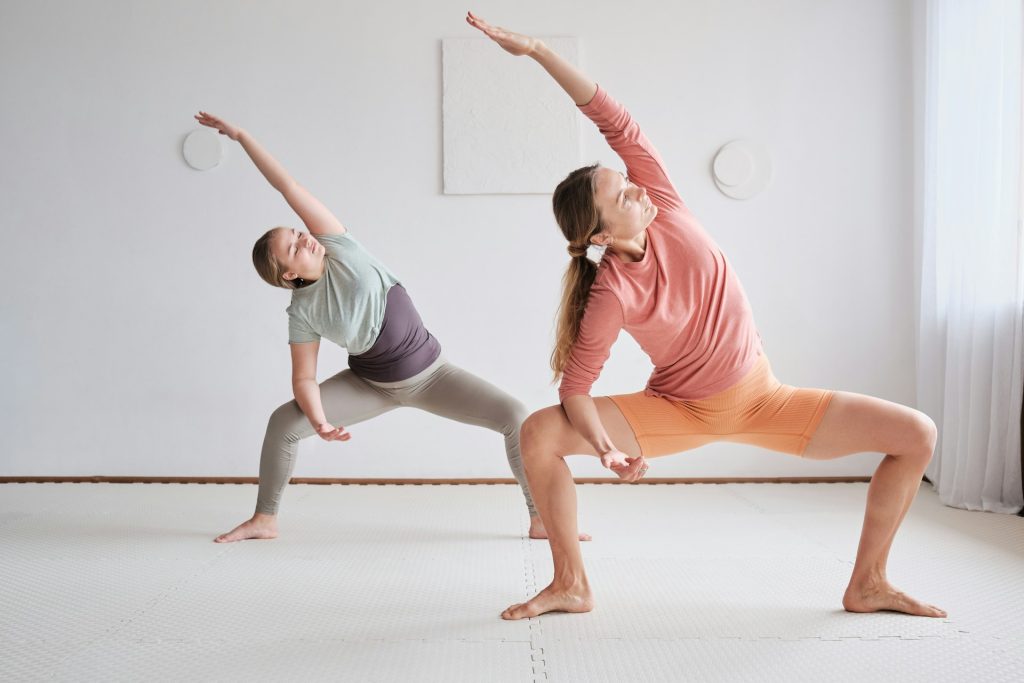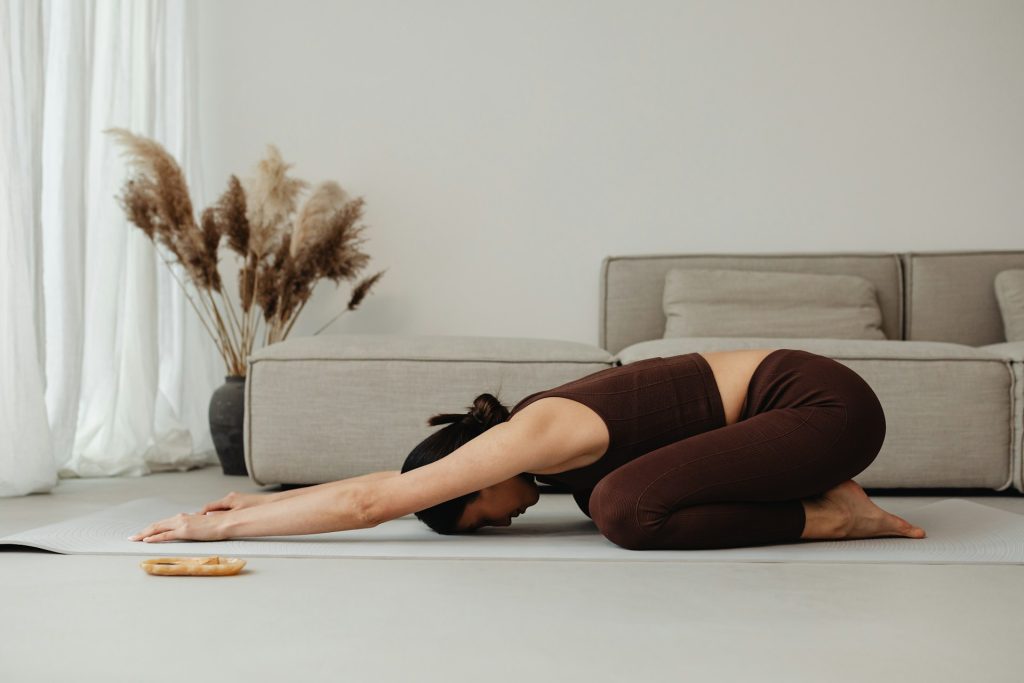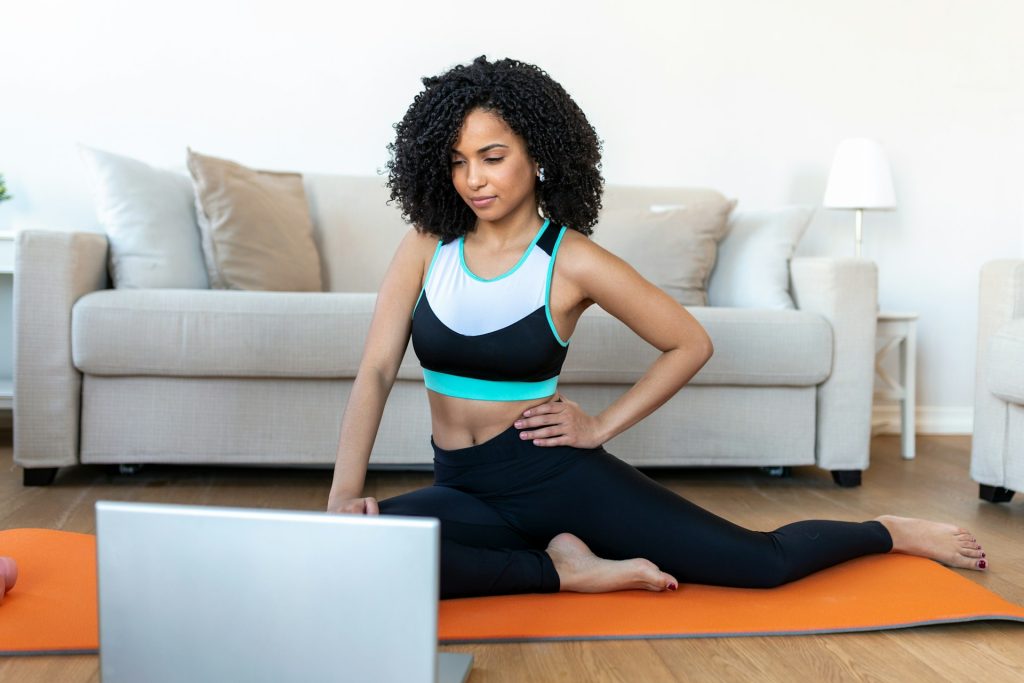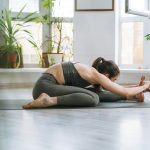Table of Contents
Want to stay strong, flexible, and vibrant as you age? Yoga might be the ultimate secret to longevity—and the best part? You don’t need to be a pro to reap the benefits. If you’re thinking “not yoga again,” stick with me—because this practice might be the key to longevity you didn’t know you needed.
Yoga Protects Your Joints and Keeps You Moving Pain-Free
Stiffness and joint pain don’t just happen overnight—they build up over time due to lack of movement, muscle imbalances, and poor posture. I used to wake up feeling like my back had aged 20 years overnight, struggling with tightness and discomfort that seemed to come out of nowhere.
But after a few weeks of consistent yoga, my mobility improved, and those aches faded. Yoga helps counteract joint stiffness by improving flexibility, increasing circulation, and engaging muscles through a full range of motion.
Unlike passive stretching, it integrates strength and mobility work, supporting the muscles around your joints to reduce strain and improve function. It’s not just about touching your toes—it’s about keeping your body strong, resilient, and pain-free for years to come.
Stronger Muscles, Healthier Bones

Muscle loss and declining bone density are natural parts of aging, but staying active can help counteract these effects. Yoga strengthens muscles through controlled, weight-bearing movements that simultaneously engage multiple muscle groups.
Unlike high-impact exercises that put stress on joints, yoga builds strength gradually by using body weight for resistance, making it a safe and sustainable option for all fitness levels.
Poses like Warrior II and Downward Dog are the best for improving flexibility, activating stabilizing muscles, enhancing core strength, and improving posture. Strengthening these muscles helps support the spine, reduce joint strain, and improve overall mobility.
Additionally, yoga enhances coordination and balance, which is crucial for preventing falls and injuries, especially as we age. By incorporating regular practice, you can maintain a strong, resilient body that moves easily and confidently for years.
Yoga Enhances Brain Health and Cognitive Function
Yoga has been shown to boost brain function by increasing blood flow and stimulating the production of brain-derived neurotrophic factor (BDNF), a key player in memory and cognitive function.
If you’ve ever struggled with mental fog like I have, you’ll understand the constant yearning for clarity. Committing to yoga helped me break free from sluggish mornings and scattered thoughts. My focus sharpened, decisions felt easier, and I stopped losing my train of thought mid-conversation.
For an extra mental boost, I’ve also found that pairing my practice with Mick’s Naturals nicotine lozenges enhances my ability to stay fully engaged. In controlled doses, nicotine is known to support cognitive function by stimulating neurotransmitters linked to attention and memory.
Unlike smoking or vaping, lozenges provide a clean, measured dose without harming lung function—making them a practical option for those looking to stay sharp.
Improved Heart Health and Circulation

Heart disease remains one of the leading causes of premature aging and mortality, but yoga can play a role in supporting cardiovascular health. Research suggests that yoga may help lower blood pressure, improve circulation, and reduce stress—three key factors in heart disease prevention.
The combination of movement, breath control, and relaxation in yoga helps regulate the autonomic nervous system, promoting better heart rate variability (HRV) and overall cardiovascular function. A well-balanced yoga practice encourages relaxation while improving circulation, making it a valuable tool for heart health.
Unlike high-impact cardio workouts, yoga provides heart benefits without excessive strain on the body. While it may not replace traditional aerobic exercise, it offers a sustainable way to support heart function and manage stress, making it an excellent complement to a heart-healthy lifestyle.
Better Posture, Less Pain
Slouching, back pain, and poor posture are common issues that worsen with age, but yoga provides an effective solution. Many people find relief from chronic discomfort simply by incorporating yoga into their daily routine.
By strengthening the core, lengthening the spine, and improving body awareness, yoga helps correct postural imbalances that lead to stiffness and pain. A friend of mine used to complain constantly about neck and back pain from sitting at a desk all day.
No matter how many ergonomic chairs or cushions he tried, the tension never disappeared. But after committing to a few simple yoga poses each morning, he noticed a real shift—his back felt stronger, his shoulders relaxed, and for the first time in years, he wasn’t rolling his neck every five minutes to ease the stiffness.
Yoga works by engaging muscles that support good posture, particularly the core, back, and shoulders. Poses like Mountain Pose and Cobra help align the spine, while gentle twists release built-up tension.
Over time, these small adjustments lead to better posture, reduced joint strain, and less reliance on temporary fixes like stretching or cracking the spine.
How to Start (Even If You’re a Complete Beginner)

You don’t need to be flexible or experienced to reap the benefits of yoga. Starting is as simple as practicing a few foundational poses for 10-15 minutes daily.
Studies suggest that a regular, sustained yoga practice—regardless of intensity—offers long-term health and longevity benefits by improving mobility, reducing stress, and supporting overall well-being.
Begin with gentle postures like Child’s Pose, Cat-Cow, and Standing Forward Fold, focusing on slow, controlled breathing and proper alignment. These foundational movements help release tension, improve flexibility, and strengthen key muscle groups without strain.
Over time, as your body adapts, gradually incorporate more challenging poses to build strength and endurance. The key is to create a sustainable practice that fits your lifestyle, allowing yoga to become a long-term habit rather than a short-term fix. Consistency matters more than perfection.
Yoga: The Longevity Practice You Can Start Today
Unlike high-impact workouts that can take a toll on your body, yoga offers a low-risk, high-reward approach to aging well. It strengthens muscles, protects joints, enhances brain health, and reduces stress—all of which contribute to a longer, healthier life.

Hi! I’m Dave, a longtime biohacker focused on natural ways to improve health and performance. My work revolves around analyzing the science behind cognitive enhancers, nutrition, and longevity strategies. I’m particularly interested in natural nicotine products and their effects on focus and energy. Everything I share is based on research and real-world application, ensuring practical, reliable insights. Please note, none of the information shared here is medical advice.




